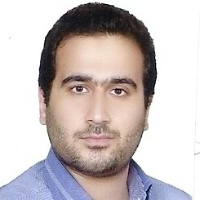Selection of superior bread wheat lines based on agronomic, phenological and morpho-physiological traits using the ideal genotype selection index (SIIG) under dryland conditions of Zanjan province
Drought, as one of the most important environmental stresses, is considered a serious risk in providing world food security. Wheat production in dry areas plays an important role in Iran's economy. Considering the expansion of bread wheat cultivation in dry areas, introducing and developing new bread wheat varieties with high yield and drought tolerance characteristics is very important. Studying the morphophysiological characteristics of new lines can be one of the suitable methods for this purpose. Using a single trait may not lead to desirable results, so in this study, to better evaluate dryland wheat lines and their phenotypic diversity and determine the best lines in terms of performance and earliness, using the SIIG selection method to integrate some of the important morpho-pheno-physiological traits was used.
144 wheat lines were evaluated under dryland conditions at the Dryland Research Station of Zanjan Agricultural Research Center in Khodabandeh city during the years (2020-2021) based on a randomized complete block design with two replications. In this experiment, rainfed wheat cultivars including Sardari, Azar2, Sadra, Homa, Ohadi, Baran, Rasd, Varan and Hashtroud were used as controls. Plant height (PLH), time from planting to spike emergence (DHE), physiological maturity of grains (DMA) along with yellowing of peduncle plants, thousand-grain weight (TGW), grain yield (YLD) after physiological maturity, canopy temperature (Tem), transpiration (T), sub-stomatal carbon dioxide (Ci), stomatal conductance (SC), mesophyll conductance (MC), chlorophyll index (SPAD) and photosynthesis (A) were measured.
Analysis of variance showed there was a difference between lines and there was also enough diversity among them in terms of traits studied. In terms of grain yield, lines 65 and 22 were respectively the highest (2625 kg) and lowest (984 kg). The average yield of the top group lines in this experiment varied between 1765 and 1911.5. Genotype grouping based on the SIIG index showed that no line was placed in groups 1, 2 and 8, but in groups 3, 4, 5, 6 and 7 respectively, 2, 15, 71, 54 and 2 lines were placed. Lines of groups 3, 4 and 5 can be selected as superior genotypes due to having an SIIG index above 0.5. But the best genotypes are due to having faster spike emergence, higher photosynthesis and ultimately higher grain yield in group 3. Based on the SIIG index, 2 genotypes (42 and 104) were placed in the top group (number 3) and also 15 other genotypes were placed in group number 4. The studied control cultivars were not included in any of these two top groups and were placed in the 5th and 6th groups. Genotypes of these top groups generally had higher mean values in traits such as stomatal conductance, mesophyll conductance, photosynthesis and yield, and in terms of the number of days until spike emergence and maturity, lower average values were observed in these genotypes. Therefore, while recommending line selection based on the SIIG method, selected lines with this index are suggested as the best lines for use in breeding programs under dryland conditions.
-
Evaluation and Selection of superior cumin ecotypes through quantitative and qualitative traits via multivariate methods under Jiroft climatic conditions
Seid Mohammad Alavi-Siney *, Hamid Reza Fanaei
Journal of Crop Science Research in Arid Regions, -
The impact of sowing and harvest dates on the yield of two fodder beet varieties in Jiroft region under autumn planting
Morteza Eshraghi-Nejad *, Mehdi Sadeghi-Shoae, Ahmad Aien
Journal of Sugar Beet, -
Estimation of drought stress resistance indices in order to select dry wheat lines for cold regions of Iran
Hossein Nazari *, Morteza Eshraghi-Nejad, Mozafar Roustaii,
Iranian Dryland Agronomy Journal, -
Determining the Stability of New Maize Hybrids with WAASBY and MTSI Indices
Mohammadreza Shiri*, Sajjad Moharramnejad, Afshar Estakhr, Sharareh Fareghi, Hamid Najafinezhad, Saeed Khavari Khorasani, Aziz Afarinesh, Kamran Anvari, Morteza Eshraghi-Nejad, Masoud Mohseni
Journal of Crop Breeding,




